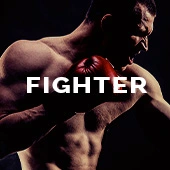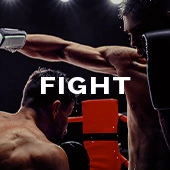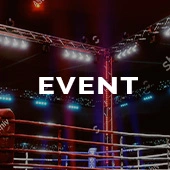By Corey Erdman
For Emmanuel Rodriguez, advancing to the semi-finals of the World Boxing Super Series bantamweight tournament may very well be a dubious honor.
Rodriguez edged out Jason Moloney in a hard-fought battle in Orlando on Saturday night, picking up a split decision via scores of 115-113 (twice) and 115-113 for his opponent. In doing so however, he also punched his ticket to face perhaps the sport of boxing’s best pure knockout puncher in Naoya Inoue.
The World Boxing Super Series has been heaped with praise, and rightfully so. Not only has it brought great fighters together and put them in a construct in which they must face one another in a timely fashion, but they have brought the actual best fighters to the tournament—the types of fighters promoters normally wouldn’t dare relinquish scheduling control over.
Consider Oleksandr Usyk, the cruiserweight king whom everyone has tabbed as a future threat to the heavyweight crown from the moment they spotted him in the Olympics. Conventional boxing promotional wisdom would tell you to leverage his reputation and popularity, strategically selecting bouts until a big payday comes along. Instead, he bet on himself and ran the table in his divisional tournament.
Now, in the second season of the tournament, another pound-for-pound caliber talent, Inoue,has surrendered himself to the confines of the tournament as well. The Japanese star’s inclusion may be even more exciting than Usyk’s was. While Usyk’s modus operandi is to systematically disarm and outbox his opponents, Inoue’s is less complicated: Blast them out. “The Monster” has ended all but one of his world title fights—of which he has 12 already at the age of 25—by way of stoppage.
It’s somewhat rare that we see knockout punchers the caliber of Inoue at the highest levels of the sport. Of course, there are the Deontay Wilders and Gennady Golovkins of the world with astronomical knockout ratios.
But many fighters with melatonin-type KO power often have major, fatal flaws. A great number of the best pure KO artists of today and yesterday are and have been thought of as just below the very elite—David Lemieux, Curtis Stevens, Earnie Shavers, Julian Jackson, Florentino Fernandez, etc. Often times, fighters of this ilk are moved so carefully as developing fighters (scheduling easy KO wins is also cheap and impressive to local audiences) that they never have the chance to round out into elite competitors, and are “exposed” when facing A-level fighters.
“I am satisfied with these fights. In fact, the faster it ends, the better it is. You want to wrap up your job as quickly as you can. I might not always speak openly about knockouts, but it is always on my mind," Inoue said in a press release last week. "“Having knocked my opponents out in my last two fights, now I know my punching power and sharpness are effective in the bantamweight class.”
Inoue is anything but a one-dimensional puncher, and is willing to prove it against slicksters like Zolanti Tete if required. His first round bout against Juan Carlos Payano looked on paper to be a fight in which Inoue might have to at least go some rounds, but he vanquished him in 70 seconds.
“I threw a jab from the inside of Payano so I could blind him. That was the strategy and the last right was also something I have been practicing a lot and it happened to connect at the very beginning,” said Inoue.
Most important of all has been the way Inoue has connected with the audience, however. His “monster” moniker might as well be in reference to his television ratings, which if achieved in the United States would have promoters salivating. Inoue’s demolition job of Payano, which aired on Fuji TV in Japan, peaked at 5.5 million viewers in the Kanto region, which comprises about a third of the country. Anecdotally, during a trip to Japan two weeks ago, the only sports news stories I saw on national broadcaster NHK all week were on table tennis, rugby and Naoya Inoue.
Over the years, Japanese fighters have largely been ignored by the American boxing marketplace. As a result, many of the great fighters Japan has had over the years have been forgotten—as evidenced by the fact that just three Japanese fighters are in the International Boxing Hall of Fame, which is voted on by a majority American press. In recent years, Japanese stars have started to get a look from American television and promoters, but often times a little too late. Toshiaki Nishioka and Koki Kameda were ratings hits in Japan (Inoue still has a ways to go before touching Koki’s 52% share for his bout against Daisuke Naito!), but by the time they received their shot on American television, were well past their primes. Takashi Uchiyama and Shinsuke Yamanaka were receiving American TV consideration after stellar careers, but both took back-to-back losses at home before that could happen.
Inoue, then, could be a truly influential and historical figure in the world of Japanese boxing. His countryman Ryota Murata was on the path to perhaps do the same, with a Top Rank contract and an IOU to face Gennady Golovkin before he lost to Rob Brant over the weekend. While Murata was the face of DAZN’s Japanese boxing campaign, Inoue may now scoop up his lost marketing hype.
With an unprecedented amount of broadcast slots for boxing in 2018, the landscape has never been better for foreign fighters to make it big in the United States. The two biggest stars in the sport—Canelo Alvarez and Anthony Joshua—aren’t American. And with Naoya Inoue’s highlight reel style, he may just be the one to break through any existing bias any entity or fan may have against Japanese fighters. Performances like Inoue’s are a bipartisan issue. As the late Emanuel Steward liked to say, “knockouts sell,” and everyone would be wise to buy now when it comes to Inoue.



